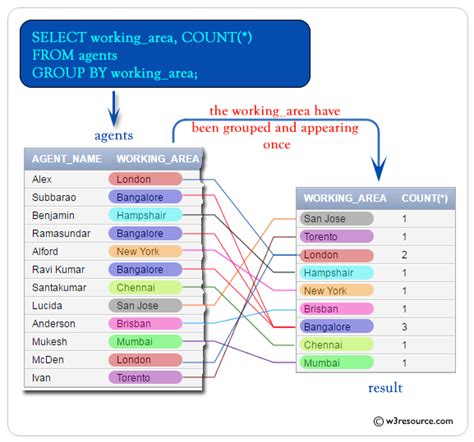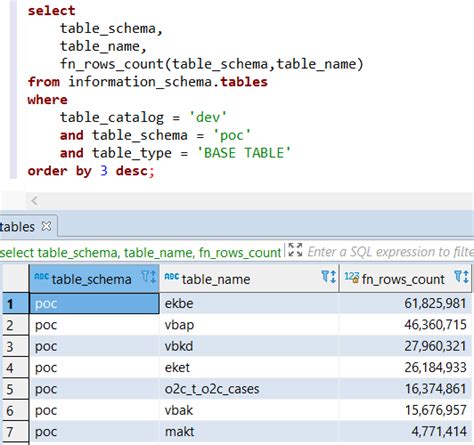Counting rows in a database table based on specific conditions is a fundamental operation in SQL, allowing you to understand and analyze your data more effectively. This operation can be performed using the `COUNT` function in combination with the `WHERE` clause, which filters the rows to include only those that meet the specified condition.
Basic Syntax

The basic syntax to count rows with a condition in SQL is as follows:
SELECT COUNT(column_name)
FROM table_name
WHERE condition;
In this syntax:
- `SELECT COUNT(column_name)`: This selects the count of rows. The `column_name` can be any column, but it's common to use `*` to count all rows regardless of their values. If you use a specific column, rows with `NULL` values in that column are not counted.
- `FROM table_name`: Specifies the table from which to count rows.
- `WHERE condition`: This clause specifies the condition that must be met for a row to be included in the count.
Example
Consider a table named `employees` with columns `employee_id`, `name`, `department`, and `salary`. If you want to count how many employees are in the 'Sales' department, you could use the following query:
SELECT COUNT(employee_id)
FROM employees
WHERE department = 'Sales';
This query will return the number of rows in your table where the department is 'Sales', effectively counting all employees in that department.
Using Conditional Operators

You can use various conditional operators in the WHERE clause to make your query more specific. For example, to count employees with a salary greater than $50,000, you could use:
SELECT COUNT(employee_id)
FROM employees
WHERE salary > 50000;
Or, to count employees whose name starts with 'J', you could use:
SELECT COUNT(employee_id)
FROM employees
WHERE name LIKE 'J%';
Multiple Conditions
It’s also possible to apply multiple conditions using AND or OR operators. For instance, to count employees in the ‘Sales’ department with a salary greater than $60,000, you would use:
SELECT COUNT(employee_id)
FROM employees
WHERE department = 'Sales' AND salary > 60000;
Or, to count employees who are either in the 'Sales' or 'Marketing' department, you could use:
SELECT COUNT(employee_id)
FROM employees
WHERE department = 'Sales' OR department = 'Marketing';
Alternatively, for the latter example, you could use the `IN` operator for a more concise query:
SELECT COUNT(employee_id)
FROM employees
WHERE department IN ('Sales', 'Marketing');
``>
<h2>Counting with Group By</h2>
<p>Sometimes, you might want to count rows based on conditions but also group the results by one or more columns. This can be achieved by combining `COUNT` with the `GROUP BY` clause. For example, to count the number of employees in each department, you could use:</p>
```sql
SELECT department, COUNT(employee_id)
FROM employees
GROUP BY department;
This query will return a list of departments along with the count of employees in each department.
Counting with Having
The HAVING clause is used in combination with GROUP BY to filter grouped results. If you want to count the number of employees in each department but only include departments with more than 10 employees, you could use:
SELECT department, COUNT(employee_id)
FROM employees
GROUP BY department
HAVING COUNT(employee_id) > 10;
This query first groups the employees by their department and then counts the number of employees in each group, finally filtering the results to only include groups (departments) with more than 10 employees.
| Clause | Description |
|---|---|
| WHERE | Filters rows before grouping. |
| GROUP BY | Groups rows based on one or more columns. |
| HAVING | Filters groups after they have been created. |

Key Points
- Use `COUNT` with `WHERE` to count rows based on conditions.
- Combine `COUNT` with `GROUP BY` to count rows grouped by one or more columns.
- Use `HAVING` to filter grouped results.
- Proper indexing can improve query performance.
- Be mindful of the difference between `WHERE` and `HAVING` when filtering data.
Understanding how to effectively count rows with conditions in SQL is crucial for data analysis and management tasks. By mastering the use of `COUNT`, `WHERE`, `GROUP BY`, and `HAVING`, you can extract valuable insights from your database and make informed decisions.
What is the difference between WHERE and HAVING in SQL?
+
WHERE is used to filter rows before grouping, whereas HAVING is used to filter groups after they have been created.
How can I count rows in a table based on multiple conditions?
+You can use the AND or OR operators in the WHERE clause to apply multiple conditions.
What is the purpose of indexing in SQL queries?
+Indexing improves query performance by allowing the database to quickly locate and retrieve the required data.



